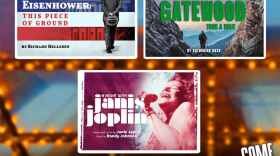To recycle or not to recycle? That is the question I often ask myself while holding a piece of cardboard or a foam plastic food container over my recycling bin. After having this great debate in my head over and over, I decided to stop by the Lee County Solid Waste Recycling Center in Fort Myers to see how it all works and discover any recycling missteps I’ve been making.
Bottles, paper, cardboard, and other materials are mechanically separated into a bin, to kick off the first step of Lee County’s recycling process. The items are scooped up and dropped into a large, green metal container by a bulldozer before making their way up a conveyor belt.
From here, it'll go to a presort station where approximately six Recycling Center employees remove trash or contaminants from the line.
Lee County residents and businesses recycled 76% of the waste generated countywide in 2020, the second-highest recycling rate in Florida. According to the Florida Department of Environmental Protection, Lee County received credit for recycling 1.6 million of the total 2.2 million tons of waste generated locally last year.
The Lee County Operations Manager in Public Utilities, Tim Lamontagne, shows me around the facility. He says one of the main missteps well-intentioned recyclers often make is bagging their recyclables for pickup.
“All these items will be rejected from this particular facility and hauled to our waste-to-energy facility to be turned into renewable energy," said Lamontagne. "But what the intention was, was to recycle these items. However, for safety reasons, personnel on our sort lines do not rip open plastic bags. So, this is an example of wish-cycling.”
“Wish-cycling” means tossing questionable items in the recycling bin, hoping that they can somehow be recycled. Lamontagne says wish-cycling is the most expensive disposal method since the materials have to be double-handled, meaning it goes to the facility, is processed, is rejected, then hauled to the waste-to-energy facility where it is processed all over.

And just because an item is recyclable doesn't mean it's recyclable in your county. The five items Lee County accepts for recycling are paper, metal, cardboard, glass and plastic. Sticking with these five categories helps keep county costs low.
But when it comes to plastics, don’t forget to check the numbers.
“When residents look at their containers there's a chasing arrow symbol with the number signs on there," said Lamontagne. "Lee County recovers numbers 1 through 7. An important factor to consider there is folks need to rinse out those containers."

For example, a peanut butter jar filled with peanut butter will not be recycled. That will be thrown away but it will be recovered in the waste-to-energy facility.
"To make plastics a viable product, they should be washed, dried, and recycled," said Lamontagne.
Recoverable materials sent to Lee County’s waste-to-energy facility will be turned into renewable energy which is then sold to the power grid.
“Lee County resident and business garbage that is brought to the waste-to-energy facility. It is processed, it is burned, and generates steam which turns around and generates electricity. Electricity is our renewable energy.”
As far as landfills, Lee County doesn’t use them. Everything that can’t be recycled is sent to the waste-to-energy facility.

So what are you recycling that you definitely shouldn't be? Lamontagne says they don’t want your plastic shopping bags from Publix or Winn-Dixie, garden hoses, plastic wrap, hypodermic needles, bowling balls, lithium batteries, or pots and pans. For more on what you can and can't recycle in Lee County, visit LeeGov.com/solidwaste.







